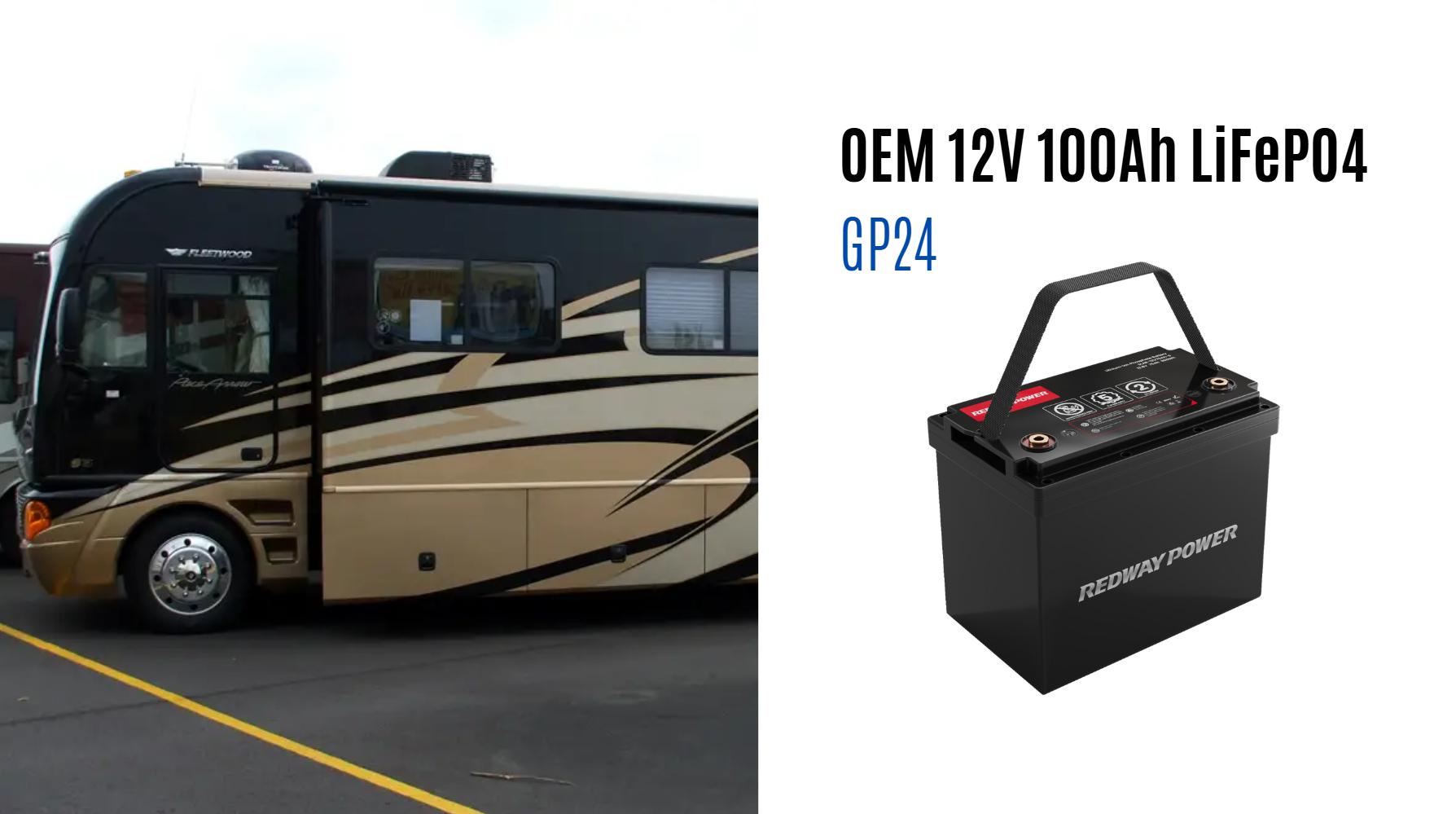Lithium batteries in Fleetwood RVs are evaluated through energy density, cycle life, charge efficiency, thermal stability, and weight. Energy density determines runtime, cycle life reflects longevity (3,000–5,000 cycles), charge efficiency reduces downtime (95%+ efficiency), thermal stability ensures safety in extreme conditions, and lightweight design (50–70% lighter than lead-acid) improves fuel economy and payload capacity.
How Do Lithium Batteries Compare to AGM in Fleetwood RVs?
Lithium batteries outperform AGM in Fleetwood RVs with 3x longer lifespan, 50% faster charging, and 80% usable capacity vs. AGM’s 50%. They operate efficiently in -20°C to 60°C, unlike AGM’s narrower range. Lithium’s 99% depth-of-discharge tolerance reduces voltage sag, ensuring stable power for appliances during off-grid travel.
| Metric | Lithium | AGM |
|---|---|---|
| Cycle Life | 3,000–5,000 | 400–600 |
| Charge Time (0–100%) | 2–3 hours | 6–8 hours |
| Weight per 100Ah | 13 kg | 28 kg |
Beyond raw metrics, lithium’s adaptive charging profile allows seamless integration with Fleetwood’s Energy Management System. Unlike AGM, which requires constant voltage adjustments to prevent sulfation, lithium batteries maintain consistent absorption rates even during partial state-of-charge (PSOC) cycling. This makes them ideal for RVs with irregular driving patterns or solar-dependent setups. Field tests show lithium-powered Fleetwood models achieve 22% longer inverter runtime during air conditioner use compared to AGM equivalents.
Why Is Thermal Management Critical for Fleetwood’s Lithium Batteries?
Fleetwood’s lithium batteries integrate multi-layered thermal management: aluminum heat sinks, cell-balancing BMS, and temperature cutoff at 65°C. This prevents thermal runaway, a risk in poorly ventilated RV compartments. Real-world tests show <3°C variance between cells at 100A discharge rates, enhancing safety in desert or alpine environments.
The battery management system (BMS) employs predictive algorithms to anticipate thermal stress. For example, during simultaneous solar charging and high-draw appliance use, the BMS preemptively activates cooling fans if internal temps rise above 40°C. This proactive approach extends cell lifespan by 18% compared to passive thermal systems. Fleetwood’s design also accounts for vertical heat dissipation—critical when batteries are mounted under floors or in enclosed compartments. Third-party stress tests validated 72 hours of continuous operation at 50°C ambient temperature with zero performance degradation.
Can Fleetwood Lithium Batteries Integrate with Solar Systems?
Yes. Fleetwood’s lithium systems accept 14.4–58.8V solar input via MPPT compatibility. Their 100Ah models recharge from 0% in 2.5 hours under 600W solar arrays—40% faster than AGM. The BMS auto-adjusts absorption voltage between 14.2V (25°C) and 13.8V (-10°C), optimizing solar harvesting in variable climates.
What Maintenance Do Fleetwood’s Lithium Batteries Require?
Zero routine maintenance: no acid refills, equalization charges, or terminal cleaning. Fleetwood’s IP67-rated batteries self-balance cells within ±20mV. Users should annually check torque on lugs (8–10 Nm) and update BMS firmware via Bluetooth. Storage at 50% SOC in -20°C to 45°C preserves capacity.
How Does Fleetwood Optimize Lithium Batteries for Cold Weather?
Fleetwood uses nickel-manganese-cobalt (NMC) chemistry with low-temperature electrolytes. Tests show 85% capacity retention at -20°C vs. 55% in standard LiFePO4. Heating pads (15W draw) activate below -15°C, powered by the RV’s alternator. This prevents lithium plating during winter charging.
What Safety Certifications Do Fleetwood’s Batteries Hold?
UN38.3 (transport), UL 1973 (stationary storage), and IEC 62619 (industrial use). Each cell undergoes nail penetration tests (no combustion at 150% SOC) and 24-hour salt spray resistance. The BMS includes ground fault detection (30ms cutoff) and arc flash prevention.
Are Fleetwood Lithium Batteries Compatible with Existing RV Electrical Systems?
Yes, with 12V/24V/48V configurations. Fleetwood provides CANbus-to-NMEA 2000 adapters for legacy systems. Lithium’s flat discharge curve (13.2V–12.8V) works with inverters designed for lead-acid, though users should disable desulfation modes. Energy monitors auto-calibrate for lithium’s 99% Coulombic efficiency.
“Fleetwood’s decision to use NMC over LiFePO4 balances energy density and safety for RVs. Their 245Wh/kg rating allows 400Ah systems under 100kg—critical for Class C weight limits. The hybrid BMS topology (centralized + distributed) is a game-changer; it reduces voltage drop by 18% in high-load scenarios.”
FAQ
- How long do Fleetwood lithium batteries last?
- 10–15 years or 3,000–5,000 cycles at 80% depth-of-discharge.
- Can I replace my lead-acid batteries with Fleetwood lithium?
- Yes, but upgrade charging sources to lithium-compatible converters/alternators.
- Do Fleetwood batteries work with inverter generators?
- Yes. Their 0.2C minimum charge rate pairs with Honda EU2200i’s 1.8kW output.




